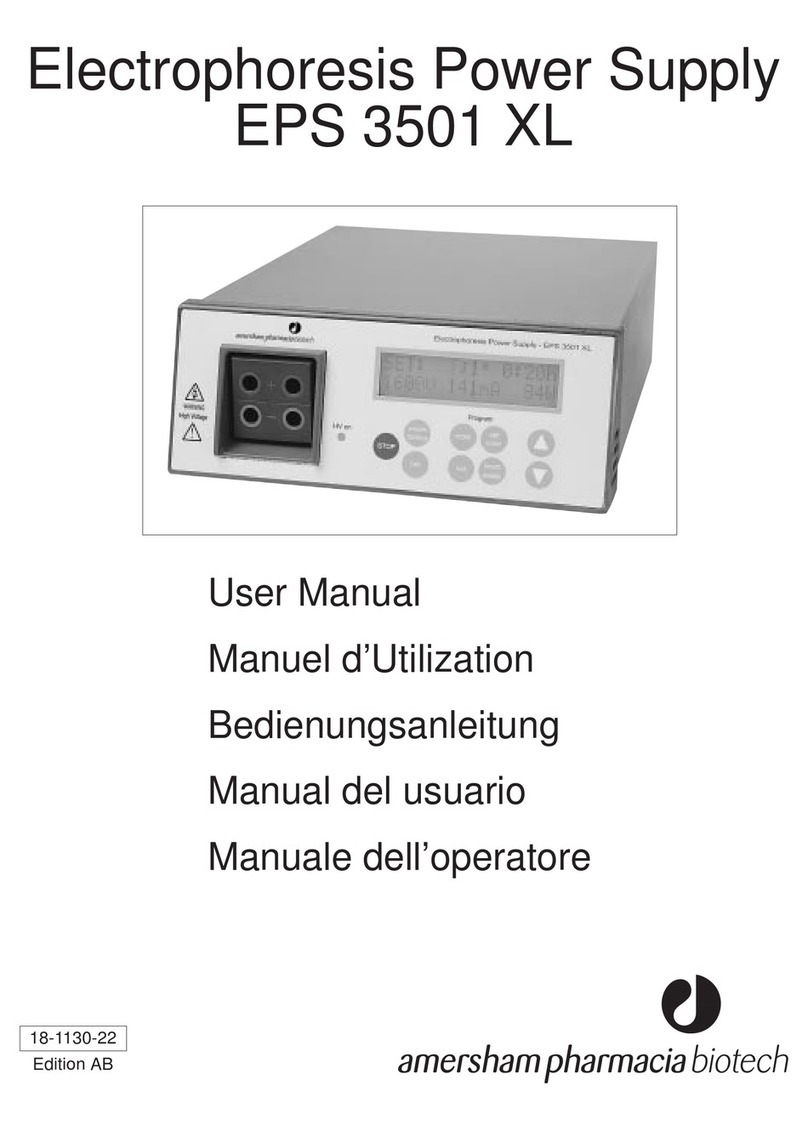
1
1. Introduction. . . . . . . . . . . . . . . . . . . . . . 2
2. Safety information . . . . . . . . . . . . . . . . . 2
2.1 Safety precautions . . . . . . . . . . . . . . 2
2.2 In-built safety features . . . . . . . . . . . 3
3. Unpacking and installation. . . . . . . . . . . 3
4. Technical description . . . . . . . . . . . . . . . 4
4.1 Front panel . . . . . . . . . . . . . . . . . . . 4
4.1.1 Display . . . . . . . . . . . . . . . . . . 4
4.1.2 Keyboard . . . . . . . . . . . . . . . . 5
4.1.3 Output sockets . . . . . . . . . . . . 5
4.2 Rear panel . . . . . . . . . . . . . . . . . . . . 5
5. Operation. . . . . . . . . . . . . . . . . . . . . . . . 6
5.1 Overview. . . . . . . . . . . . . . . . . . . . . 6
5.2 Programming. . . . . . . . . . . . . . . . . . 6
5.3 Running a program . . . . . . . . . . . . . 8
5.4 Optional programming . . . . . . . . . . 9
5.5 Choosing run parameters. . . . . . . . 10
5.6 Short instructions. . . . . . . . . . . . . . 11
6. Maintenance . . . . . . . . . . . . . . . . . . . . 12
7. Trouble shooting . . . . . . . . . . . . . . . . . 12
8. Technical specifications . . . . . . . . . . . . 13
9. Ordering information. . . . . . . . . . . . . . 14
Contents
EPS 601 - User Manual
Please read this entire manual to
fully understand the safe use of
EPS 601
WARNING!
The Warning sign
highlights an instruction
that must be strictly
followed in order to
avoid personal injury. Be sure not to
proceeed until the instructions are
clearly understood and all stated
conditions are met.
Declaration of conformity
Safety Standards
This product complies with the
requirement of the Low Voltage
Directive (LVD) 73/23/EEC through
the harmonized standard EN 61010-
1, 1993+ A1, 1992.
Important user information
EMC Standards
This product complies with the
requirement of the EMC Directive
89/336/EEC through the harmonized
standards EN 50081-1 (emission)
and EN 50082-1 (immunity).
The CE symbol, and corresponding
declaration of conformity, is valid
for the instrument when it is.
– used as a “stand alone” unit or
– connected to other CE marked
Amersham Pharmacia Biotech
instruments, or
– connected to other products
recommended or described in
this manual and
– is used in the same state as it was
delivered from Amersham
Pharmacia Biotech except for
alterations described in this
manual.
Terms and Conditions of Sale
All goods and services are sold
subject to the terms and conditions
of sale of the company within the
Amersham Pharmacia Biotech group
which supplies them. A copy of these
terms and conditions is available on
request.
Should you have any comments on
this product, we will be pleased to
receive them at:
Amersham Pharmacia Biotech Inc.
654 Minnesota Street
San Francisco, CA 94107 USA
Trademarks
Amersham is a trademark of
Nycomed Amersham plc.
Pharmacia and Drop Design are
trademarks of Pharmacia & Upjohn
Inc.
© Copyright 1998 Amersham
Pharmacia Biotech AB - All rights
reserved
Office Addresses
Amersham Pharmacia Biotech AB
SE-751 84 Uppsala
Sweden
Amersham Pharmacia Biotech UK
Limited
Amersham Place Little Chalfont
Buckinghamshire
England HP7 9NA
Amersham Pharmacia Biotech Inc.
800 Centennial Avenue
P.O. Box 1327
Piscataway N.J. 08855-1327
USA
!
18-1130-19 AA EPS 601 inlaga 99-02-09 10.56 Sidan 1




























